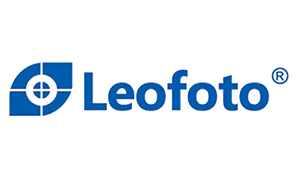Specifications
|
Weight: |
690g |
|
Max Load: |
20kg |
|
Height: |
108mm |
|
Ball Diameter: |
N/A |
|
Base Diameter: |
60mm |
|
Plate Model: |
NP-60 |
|
Panning Clamp: Yes/No |
Yes |
|
Clamp Release: |
Screw Knob |
When it comes to photographic accessories, there is no greater aid to composition than the fine and precise control of a geared head. This field of tech stagnated a lot during the 2000-2015 period when options were limited to one or two manufacturers’ outdated options. Over the last few years, however, there has been a renaissance of geared heads, with a lot more tripod manufacturers and engineers working on improved designs. This has brought lighter, more compact geared heads to the market that are a dream to use. Pricing ranges from Leofoto’s G2 and G4 at R4999 and R9999 respectively to something like the Arca Swiss Cube which will cost close to R40k with VAT and shipping. Forty thousand rands for a tripod head? That is not a typo, in case you were wondering!
Geared heads are not cheap, but if you’re someone who composes their images slowly, carefully and with great thought, then a geared head is one of the best purchases you can make.
Size - The G4 is the larger of Leofoto’s two offerings at 680g in weight. It measures 115mm at its widest point and 102mm top to bottom, so it displaces about a 10cm cube of space. More simply put, it is about the size of a large ball head. It looks perfectly at home on tripods 3-series (Leofoto 32) and larger. On 2-series, (Leofoto 28) or smaller, it will look oversized and the tripod will be dangerously top-heavy. The main (local) competition in geared heads is not only 30% more expensive, but weighs 2.4x more and will displace about twice the amount of space when it has to be packed. While the G4 is not exactly a travel-friendly tripod head, it dominates every parameter such as weight and size in its class.
We recommend pairing the G4 with one of the Summit range legs and a YB-75L in-apex leveling base for the ultimate tripod setup.
Quality - The first thing you’ll notice when you handle the G4 is that it looks and feels incredibly solid. There is no excess material and every component has been machined away as much as practically possible to trim down excess weight. All external components are machined from aluminium and the internal mechanisms are made of brass and stainless steel. The head mounts to tripods via a brass 3/8” screw hole. As seen in other Leofoto products, there is no compromise in the materials used.
Controls - For those who don’t like to use a tripod, the seven controls on the G4 will definitely be overwhelming, but operation is extremely simple once you’ve had a few minutes to play with the head.
- The two large round knobs control the geared X- and Y- axes of the head. The gearing is high and buttery smooth, which ensures ultra-fine control of the composition.
- The two large tap-style levers are the clutches, which disengage the gear mechanisms of the X- and Y-axis. This is for when you’re in a rush and you need to make gross adjustments. These aren’t really used much and many geared heads don’t even have a clutch for the geared axes.
- The bottom lever controls the primary panning function of the head.
- The small lever on the clamp controls the secondary panning function.
- The screw on the clamp is obviously a standard clamp screw for securing your camera.
Load Rating
The manufacturer’s load rating of 20kg is a bit ridiculous. The load rating depends greatly on the range of movement you need; If you keep the camera fairly balanced, in other words, atop the head, with about a 20-degree vertical movement range, then it can handle the likes of 10-20kg. If, however, you go past a 20-degree angle, in order to get a very slanted shot or to shoot up or down at an extreme angle, then it will probably struggle with a load of more than 4kg. Keep in mind that we always try to be honest about the performance of our products. Firstly, you will likely almost never need to shoot at those angles. Most landscape and architecture work is done with the horizon in the frame, meaning that you’re panning at most 10-20 degrees up or down. Secondly, 4kg is extremely heavy; unless you’re mounting an 800mm on a pro body, you simply won’t come close to that kind of weight.
We put a Fuji GFX100 with the massive GF250mm and 1.4x TC on this head (mounted via lens foot) – this is a truly monstrous combo in size and weight. People are normally shocked at the weight if they pick it up, yet it barely gets the scale past the 3kg mark. The head handles it very comfortably in a tilt range of about 30 degrees, but once the camera really starts hanging on the head, it requires a fair amount of input to move it back up against gravity. Again, as mentioned above, the real-life situations where you need such a massive range of motion are virtually zero. Have you ever weighed your favourite body + lens combos? A Canon 5D4 with the heavy 24mm TS II, batteries and L-bracket weigh under 2kg. So while our conservative estimate of 4kg might not sound like a lot compared to the manufacturer’s 20kg, it is more than 99% of people need.
Shooting in Portrait
As we’ve said a million times on this website and will say a million times more, get an L-bracket. Tripod heads aren’t designed to shoot in two orientations.
| Brand Name | Leofoto |
|---|---|
| UPC/EAN (Bar Code) | 6940828315549 |
| Model Number | G4 |
| Travel Design / Reverse Folding Legs | No |
| Bubble Level | No |
| Removable Head | No |
| Independent Leg Spread | No |








